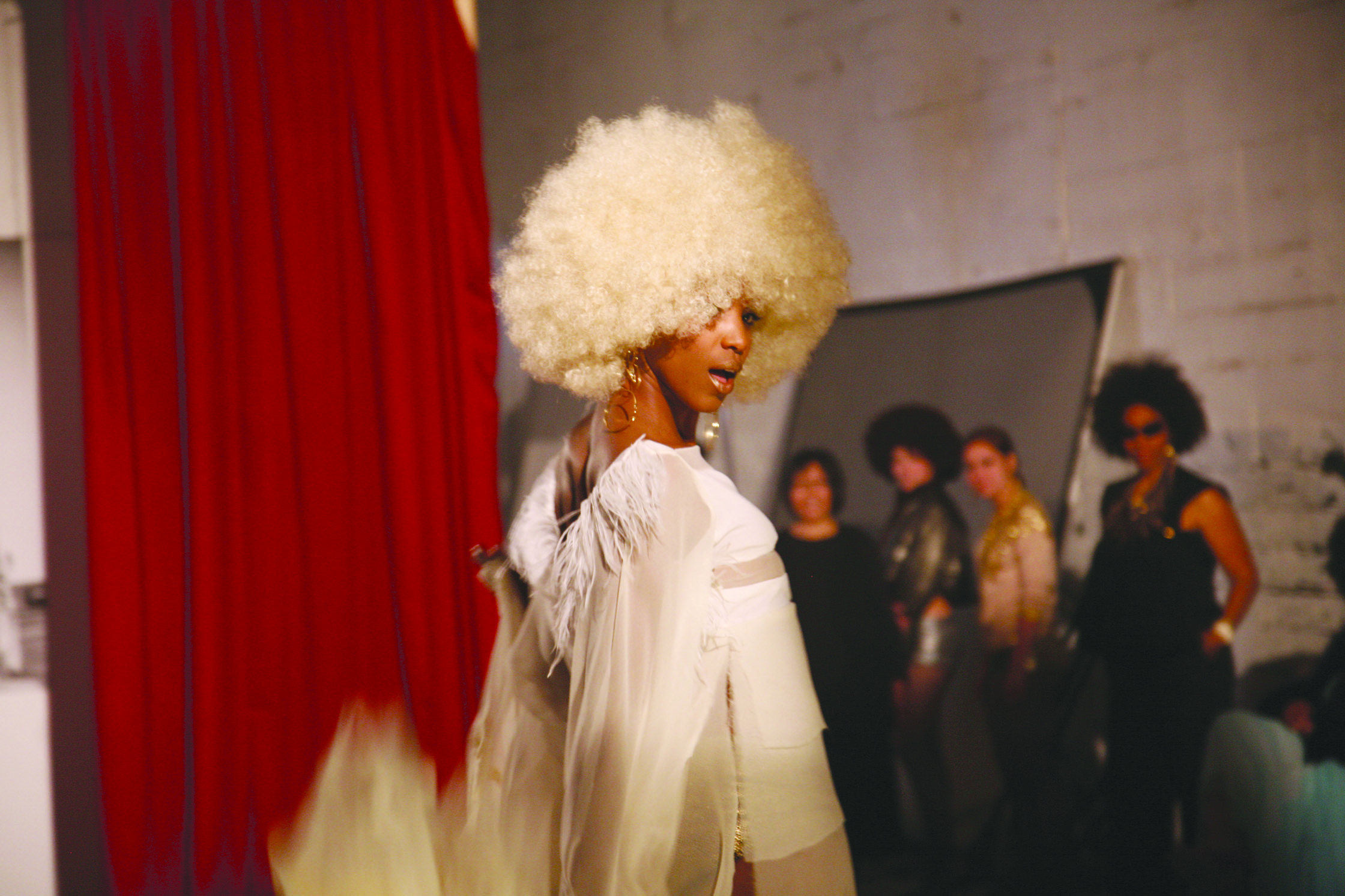Carrie Mae Weems, a 2013 MacArthur Grantee, received her first camera for her 21st birthday. Since then, she has used photography in conversation with sculpture, poetry and video to bravely interrogate issues of race, class and gender in contemporary society.
“Carrie Mae Weems: Three Decades of Photography and Video,” a new exhibition at the Cantor Arts Center and the artist’s first major retrospective, is the kind of exhibit that stays with its visitors, reawakening them to the complexity of human nature.
The exhibition is organized around three themes underlying Weems’ work: the construction of identity, the power of place and the legacy of history. Trained as a folklorist, dancer and photographer, Weems is best known for her representation of the African American experience but considers her work universal. In a lecture to the Stanford community on Oct. 16, Weems said that “race is, in some ways, just the easiest thing to get from my work…[In my photos,] people of color stand for the human multitudes.”
“Colored People” (1989) is a collection of portraits of black children, tinted to “blue black,” “golden yella” and “red bone” — colors that correspond with reductive labels. Weems puns on the sociopolitical ‘lens’ through which we see and name people, highlighting the spectrum of color contained in the word “black.” In the exhibit, “Colored People” is on display next to “Untitled (Colored People Grid),” which Weems made almost 20 years later, intermingling solid color prints and portraits in a grid. The juxtaposition of these two works suggests the persistence of these labels and their implications in a purportedly ‘post-racial’ American society.
Next door, “The Kitchen Table Series” (1990), perhaps Weems’ best-known work, exposes the various identities that converge at a kitchen table. In this series, as in many of her pieces, Weems performs as the protagonist, using her own kitchen to stage the struggles between sexes and generations for domestic power. In the photos, a single light source illuminates the drama of family — the pressures posed by monogamy, parenting and communal responsibility — while 14 text panels weave the scenes into narrative.
In one of these pictures, “Man Smoking,” Weems is seated in front of a poster of Malcolm X, playing cards and sipping whisky with her husband. The stakes of the interaction are palpable, begging the question, “Who moves next?” At the same time, the focal point of the picture is clear: The woman’s gaze — its venom, seduction, dignity and mostly, ambiguity — is where the picture starts and stops.
Much of Weems’ work is about the history of photography and the social politics of camerawork. In “Not Manet’s Type” (1997), Weems explores (and blurs) the lines between muse and artist, the way a photo is “taken” but a subject stays unseen. To this end, she combines text with images of images — photos of herself, naked, in a mirror. Her captions ask us what it means to study and be studied: “STANDING ON SHAKY GROUND / I POSED MYSELF FOR CRITICAL STUDY / BUT WAS NO LONGER CERTAIN / OF THE QUESTIONS TO ASK.”
En route to answering her own questions about questions, Weems has traveled widely — to Senegal, Ghana and the Sea Islands — and in the process, documented and rewrote African American cultural myths and stereotypes associated with particular geographies. In a recent video, “Roaming (Italian Dreams)” (2006), Weems walks the historic grounds of Rome in a black dress, projecting her dark silhouette onto vistas associated with Western cultural legacy.
Collectively, her work interprets and advocates for a more inclusive historical record. As a performer, photographer, videographer and poet, she illuminates the invisible and complicates the visible, raising questions about how to holistically represent human relationships, past and present. While it’s challenging to distill each of Weems’ pieces, let alone her retrospective style, to a central idea, this is, perhaps, part of her point: “We” are many. “We” are mystery.
Contact Gillie Collins at gcollins ‘at’ stanford.edu.
